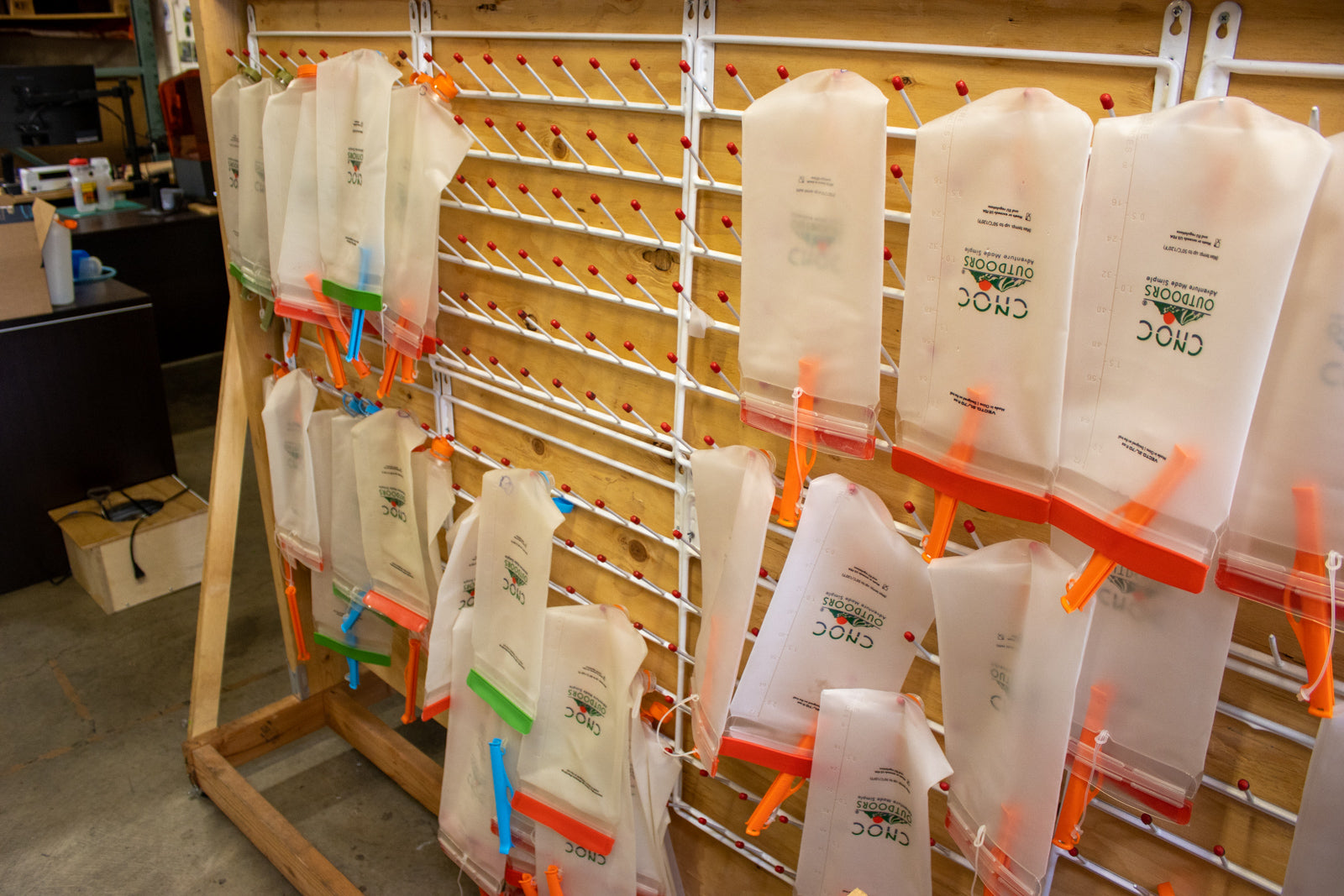How To Repair Your Vecto In The Field

There is no such thing as indestructible gear - the closest you can get is repairable gear. Our Vectos are designed with durable TPU, but the life of outdoor gear is not an easy one, and every piece of gear is susceptible to wear and tear in harsh conditions, or even just with enough use over time. The Vecto is designed in line with our mission to make our gear repairable on the trail.
At Cnoc, we always want you to repair your products before buying new ones - it allows you to get the full value of our products and prevents gear from ending up in a landfill before its time. With that in mind, here’s a step by step guide to repair the most common Vecto issue.
The most common issue you’ll come across over the course of a Vecto’s lifespan is a pinhole or small tear - luckily, it’s also one of the simplest repairs to do at home or in the field. We recommend the Tear Aid Type A Patch to repair a leaky Vecto. They are available on our site and at many local gear shops, and it’s always a good idea to keep one in your emergency kit - they weigh almost nothing and can be used to fix more than one type of backpacking gear failure.
Step 1: Find and mark the leak

If the pinhole or seam rip isn’t visible, you’ll likely need to fill it to determine exactly where the leak is located. The bag will then need to dry before you begin any repairs, so make sure to mark the hole so you don’t lose track of it.
Step 2: Prepare your surface

Make sure your Vecto is completely clean and dry - dust and water will prevent the patch from forming a seal. If at all possible, grab some rubbing alcohol (or an alcohol wipe from your first aid kit) and wipe the surface of the hole. Dab some Super Glue directly onto the hole or tear.
Step 3: Ready your patch

Grab a Tear Aid Type A patch and round the corners so it will sit flat. A square patch will form air bubbles at the corners, allowing dust, dirt, and moisture to enter - this will degrade the seal over time.
Step 4: Apply to Vecto

Pressing firmly from the center outwards, apply the patch with a tight seal so no air bubbles form.
Step 5: Test your patch
Test your patch by filling your repaired Vecto with water and adding pressure - if you’re repairing from home, make sure to do this before taking your Vecto into the backcountry with you.
And that’s it! Your Vecto has a second life and many more uses in it.
If you’d like to see all these steps in action, check out this Vecto repair how-to video on our YouTube channel. Feel free to check out our warranty page or contact us for support in repairing your Vecto.









Hi Eric, in our experience, Tear Aid patches are the best option for patching a Vecto.
Would you say Tear Aid is better than Tenacious Tape of this purpose?
Hi Robin! We suggest using both an alcohol wipe to clean the surface and then a dab of superglue to form a better seal before putting the patch on. The superglue isn’t a requirement, but we find it makes for a more secure patch!
In step 2, you mention dabbing the area with superglue. Did you mean dabbing it with rubbing alcohol? The patch kit does not come with superglue.
Hi Lee, it is likely accumulating gook from on trail water sources and needs a deep clean. Head over the the Vecto FAQs in our support portal to learn how to do so.
Leave a comment